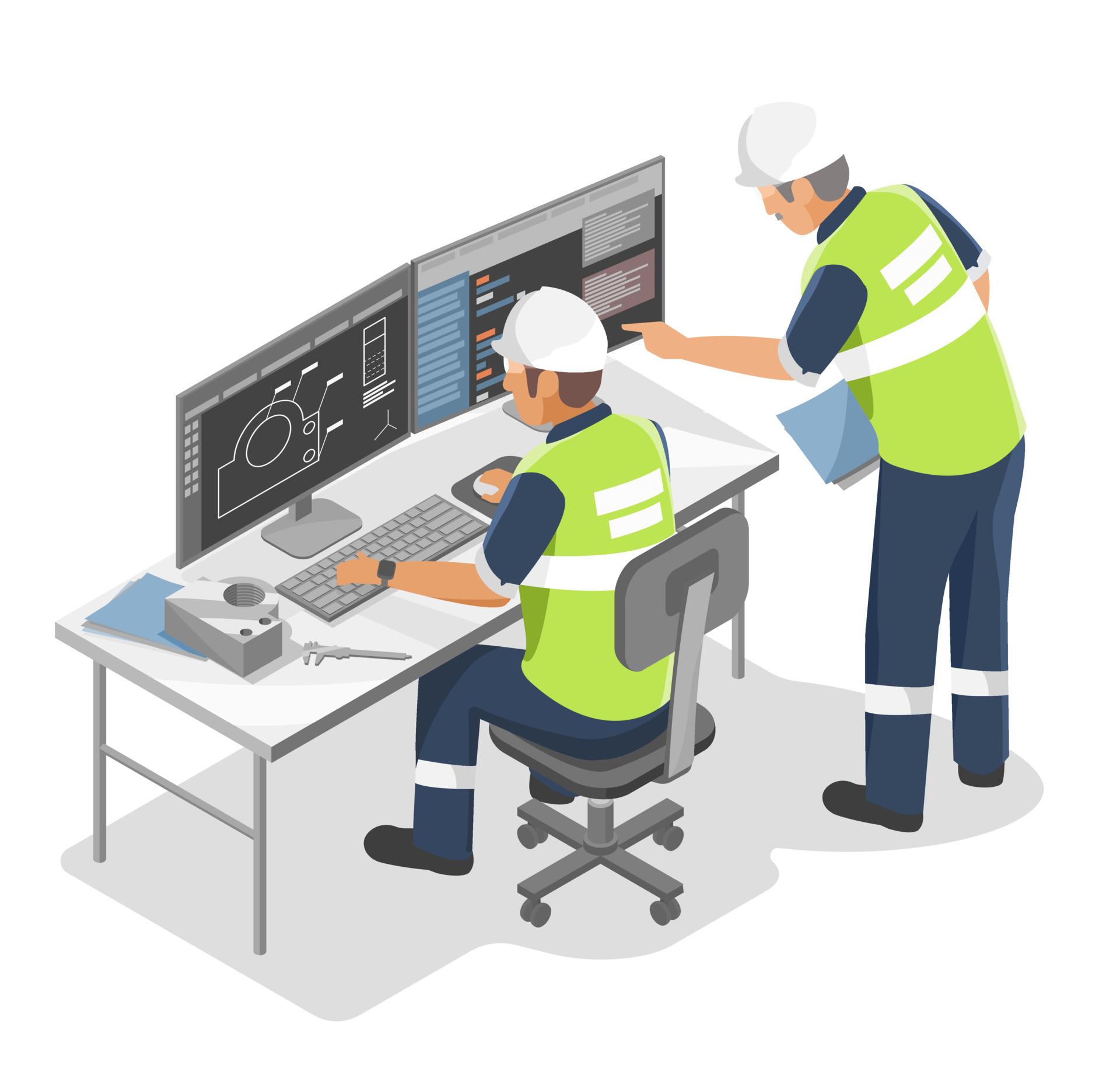
Engineering is a rapidly evolving field that is constantly being pushed forward by new and innovative technologies. From artificial intelligence to the Internet of Things, engineers today have access to a vast array of tools and techniques that allow them to design, build, and maintain complex systems in ways that were once thought impossible. In this article, we’ll take a closer look at 10 of the most cutting-edge technologies in engineering today, exploring what they are, how they work, and how they are being used to change the world.
- Advanced Materials Science – The development of new materials, such as advanced composites and nanomaterials, is providing engineers with new tools and capabilities to create stronger, lighter, and more durable products and systems. For example, advanced composites are being used in the aerospace and automotive industries to reduce weight and improve fuel efficiency, while nanomaterials are being used to create stronger and more corrosion-resistant structures.
- Augmented Reality (AR) – AR refers to technologies that superimpose digital information on the real world, providing users with an interactive, immersive experience. In engineering, AR is being used to enhance training and education, streamline design and prototyping processes, and improve maintenance and repair operations. For example, AR can be used to provide visual instructions for complex assembly procedures, or to overlay digital data on physical systems during maintenance or repair operations.
- Artificial Intelligence (AI) – AI refers to a wide range of technologies that are designed to simulate human intelligence in machines. In the field of engineering, AI is transforming the way engineers approach design and analysis, with machine learning algorithms capable of optimizing complex systems and predicting outcomes with remarkable accuracy. For example, AI can be used to design and test prototypes of new products in virtual environments, saving time and reducing the cost of product development.
- Internet of Things (IoT) – IoT technology refers to the integration of physical devices, such as sensors and actuators, with the Internet. This allows for real-time monitoring, control, and automation of a variety of systems and processes, from factories and warehouses to homes and cities. For engineers, IoT technology is opening up new opportunities to create smart, connected products and systems that can improve efficiency, increase safety, and enhance the user experience.
- Additive Manufacturing (3D Printing) – Additive manufacturing, or 3D printing, is a process in which parts and components are built up layer by layer using a 3D printer. This technology is revolutionizing the way engineers think about manufacturing and product development, as it allows for the creation of complex and customized parts and products in a fraction of the time and cost of traditional manufacturing methods.
- Autonomous Systems – Autonomous systems, such as self-driving cars and drones, are rapidly advancing and changing the way engineers approach the design and development of transportation and logistics systems. With the ability to sense and respond to their environments, these systems can operate without human intervention, providing increased efficiency, safety, and accuracy in a variety of applications.
- Blockchain Technology – Blockchain technology is a secure, decentralized ledger that allows for the storage and transfer of digital information without the need for a central authority. In engineering, blockchain is being used to create secure and transparent supply chain management systems, to manage and track the distribution of renewable energy, and to secure the transmission of data in critical infrastructure systems.
- Cybersecurity – As more and more systems and devices become connected, the threat of cyberattacks continues to grow. Cybersecurity is therefore becoming an increasingly important area of focus for engineers, who must design and build systems that are secure and resilient against potential threats. This involves using a variety of tools and techniques, including encryption, firewalls, and intrusion detection systems, to protect against cyberattacks and ensure the security of sensitive data and systems.
- Big Data – With the growing amount of data being generated by connected devices and systems, engineers are faced with the challenge of how to store, manage, and analyze this data in meaningful ways. Big data refers to the collection, analysis, and interpretation of extremely large data sets, and is being used to inform decision-making, improve efficiency, and identify patterns and trends in a variety of industries. For engineers, big data is providing new insights into complex systems and processes, and is being used to optimize everything from supply chain management to product design.
- Simulation and Modeling – Simulation and modeling technologies allow engineers to create virtual representations of complex systems and processes, and to test and analyze these models in a controlled environment. This technology is playing a critical role in product design, prototyping, and testing, allowing engineers to identify and solve problems before they occur in real-world environments.
- irtual and Augmented Reality – Virtual Reality (VR) and Augmented Reality (AR) are changing the way engineers approach product design, testing, and training. VR allows engineers to create virtual prototypes of products and systems, and to test them in simulated environments, while AR provides a way to overlay digital information on physical systems, allowing for real-time monitoring and control.
- Renewable Energy – As the demand for clean and sustainable energy sources continues to grow, engineers are working to develop new and innovative technologies to harness the power of renewable energy sources, such as solar, wind, and hydropower. From the development of new energy storage solutions to the design of more efficient and effective renewable energy systems, engineers are playing a critical role in the transition to a more sustainable energy future.
- Quantum Computing – Quantum computing is a new and rapidly evolving field that promises to revolutionize the way engineers approach complex computations and simulations. By leveraging the principles of quantum mechanics, quantum computers can perform complex calculations much faster than classical computers, and are being used to solve problems in areas such as cryptography, chemical simulations, and machine learning.
- Geospatial Technologies – Geospatial technologies, such as GIS and GPS, are being used by engineers to better understand and manage the physical world. From creating detailed maps of urban environments to monitoring the health of crops and forests, geospatial technologies are providing new insights into the environment and are helping engineers make more informed decisions.
- Smart Grid Technologies – Smart grid technologies are being used to modernize the electrical grid, making it more efficient, reliable, and sustainable. With the integration of advanced sensors, automation, and data analysis, smart grids are allowing engineers to better manage energy demand, reduce waste, and improve the overall reliability of the electrical grid.
- Drones – Drones, or unmanned aerial vehicles (UAVs), are becoming increasingly popular in a variety of industries, from agriculture and construction to delivery and search and rescue operations. With the ability to fly and collect data in difficult-to-reach areas, drones are providing engineers with new insights into complex systems and processes, and are being used to improve efficiency, accuracy, and safety in a wide range of applications.
- Robotics and Automation – Robotics and automation technologies are transforming the way engineers approach manufacturing, construction, and a variety of other industries. From assembly lines to construction sites, robots and automated systems are providing increased efficiency, accuracy, and safety, and are allowing engineers to tackle complex tasks and operations that were once thought impossible.
These are just a few of the many cutting-edge technologies in engineering that are changing the world today. Whether it’s through the use of AI, IoT, or any of the other technologies mentioned above, engineers are at the forefront of innovation, pushing the boundaries of what’s possible and shaping the future of our world. With each new breakthrough, the possibilities for what engineers can create and achieve continue to expand, and the impact they have on our lives continues to grow.





